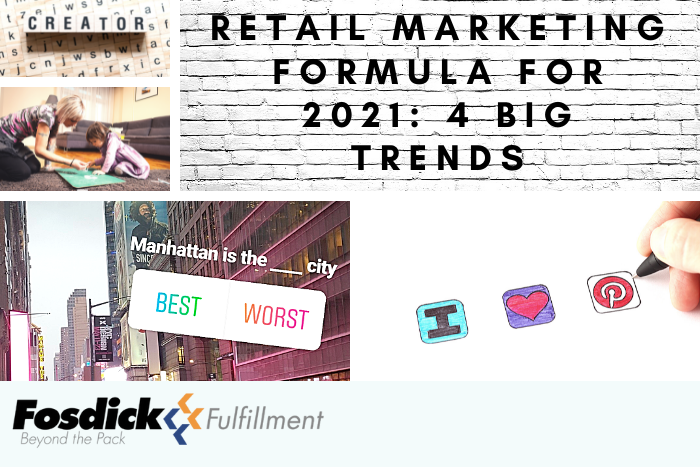The Lasting Impact of Ephemeral Marketing
In June, Balenciaga, a luxury fashion house founded in 1919 by the Spanish designer Cristóbal Balenciaga in San Sebastián, Spain, and currently based in Paris, scrubbed its Instagram feed clean in preparation for the launch of its first haute couture collection in 53 years. Louis Vuitton’s creative director, Nicolas Ghesquiere did the same ahead of the French fashion house’s spring-summer presentation.
Marketers are just not as focused on the optics of social or this idea that their role is to help create the perfect digital business card. Instead, the best operators are having real conversations with real people on behalf of their companies. They are conducting business the same way big business has been done for hundreds of years.
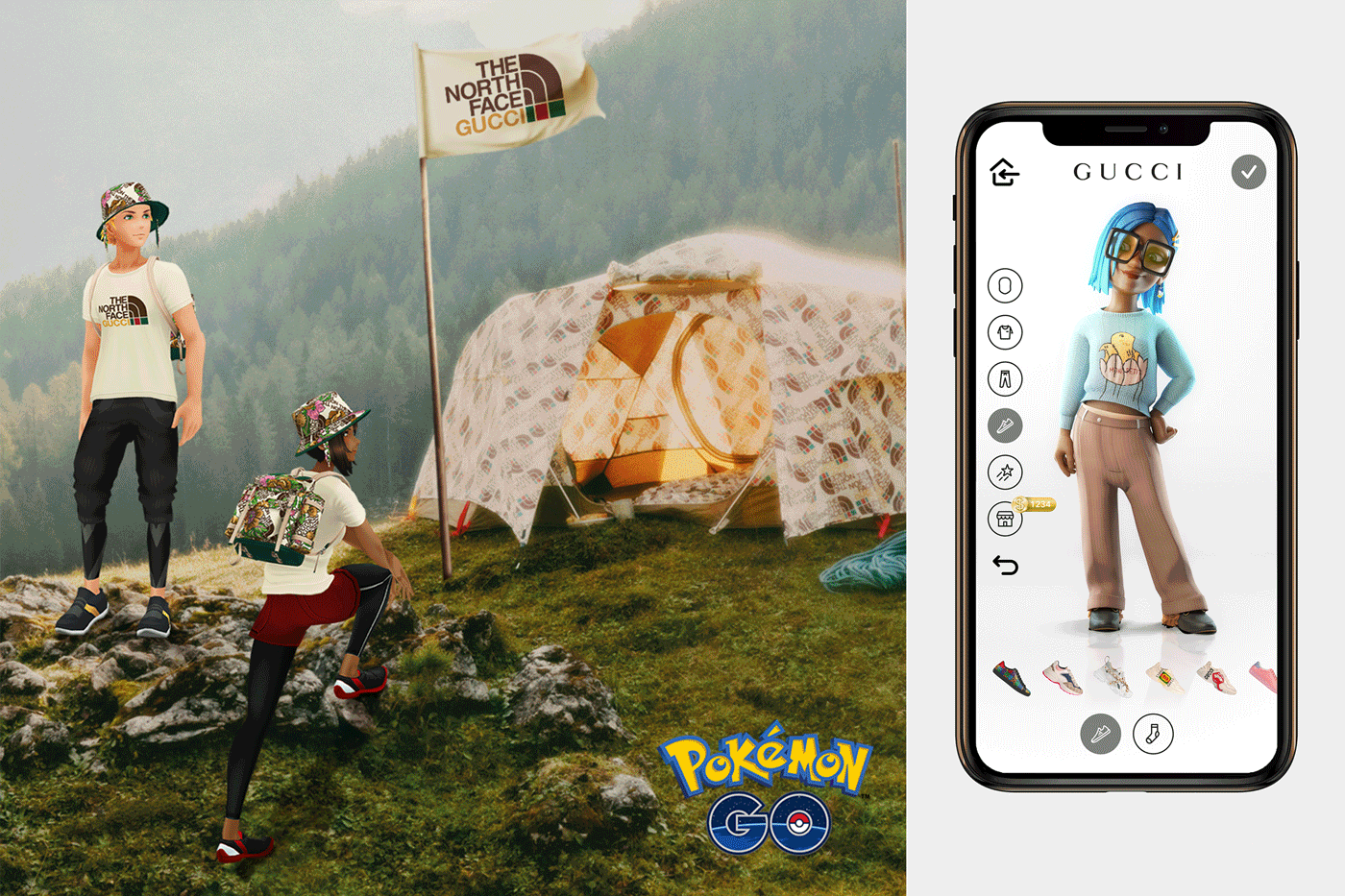 Lore Oxford, global director of cultural insights at We Are Social describes how companies like Telfar and Bottega Veneta are increasingly concentrating on developing one-on-one interactions with their most devoted customers. “Social media is transforming from a place to diarise and track your existence to being a place that you show up to for ephemeral stories and experiences. We are really at the start of that.” She also cites Gucci’s partnership with Roblox, which included a virtual two-week art installation that coincided with physical exhibitions around the world. Microsoft orchestrated a similar campaign around international women’s day and black history month. The software giant leveraged its massive following by partnering with a 360-degree virtual tour production platform, Kuula for a series of 360-degree, remote museum exhibits.
Lore Oxford, global director of cultural insights at We Are Social describes how companies like Telfar and Bottega Veneta are increasingly concentrating on developing one-on-one interactions with their most devoted customers. “Social media is transforming from a place to diarise and track your existence to being a place that you show up to for ephemeral stories and experiences. We are really at the start of that.” She also cites Gucci’s partnership with Roblox, which included a virtual two-week art installation that coincided with physical exhibitions around the world. Microsoft orchestrated a similar campaign around international women’s day and black history month. The software giant leveraged its massive following by partnering with a 360-degree virtual tour production platform, Kuula for a series of 360-degree, remote museum exhibits.
So what becomes of the news feeds, and walls of bygone days? British fashion label, JW Anderson’s entire Instagram footprint is made up of just 35 images highlighting seasonal goods. While counterintuitive, it turns out the lifespan of those posts and their impact is not all that much more than that of story or reel content.
In-feed posts will have produced around half of their entire number of impressions within 8 hours. After 24 hours, it would be 80%, and after 48 hours, it would be more than 90%. That said ephemeral material is believed to be incompatible with luxury, which has established its reputation on legacy and in-depth narrative. But in luxury fashion especially, it is also true that the core product is ephemeral. We’re talking about an industry defined by seasons, launches, and lines. Moreover, if we are to think of social media as an extension of a company’s web presence then for established legacy brands, that logic would have to apply to top-level employees as well – like Ghesquiere whose position with LV makes him every bit the brand ambassador as any top influencer.
Beyond influencer culture, though, there is real-time evolution around social marketing and the advent of short-lived marketing using platform vehicles like Facebook and IG stories – which effectively borrowed and surpassed the original IP from Snap, and like Youtube Reels – Google’s response to Tik-Tok’s popularity among Gen Z. The big change is that stories have forced companies to curate less, taking on more of a human, personal brand persona.
This is a far cry from curation to the extent that each thumbnail in the IG grid acted as a small section of the larger graphic puzzle, something for which user-friendly, graphic design software platform Canva still offers a template.
The other interesting thing about stories is they are short-lived marketing in the way sponsored story content mimics TV advertising in terms of function, call to action, and monetization. In other words, rates are determined by the number of eyeballs on content and how often.
But the nature of stories is such that content disappears after 24 hours – likely a worthy sacrifice when one considers the functionality of story content when compared to the feed. Fundamentally, story content allows users to link to various external websites, something that has never been possible within a conventional post. There are a few other features built into stories that specifically support consumer engagement. The ability to poll followers, host contests, conduct public Q & A, and call followers to action with direct links to sub-domains or microsites has quite literally changed the way brands think about social media.
Then, of course, there are influencers, who play a unique role in the way brands strategize around social, and in the debate about ephemeral vs. permanent content. Of greatest interest, is the way in which they determine the cost basis for various content types.
According to digital creator and entrepreneur, Brittany Xavier, it is mostly true that influencers ask brands to pay significantly more for a permanent feed post than for short-lived stories. Xavier has 4.3 million followers on Tiktok and 1.7 million on Instagram. She charges brands up to 50 percent more. Idalia Salsamendi, a brand, and influencer strategist, who has consulted for Dior, Chopard, Valentino, and Cle de Peau Beaute, says the fee can rise by up to 100 percent.
“As a brand, you’re probably going to be doubling costs if you’re asking for a more permanent post, even if it’s an influencer’s Instagram highlights because that content is living for exponentially longer,” she says.
Chriselle Lim, a digital artist, has willingly climbed down this loophole, hiking her pricing for sponsored story highlights, something that seems to benefit her personal brand health in more ways than one.
It’s in an influencer’s best interest to avoid overcrowding their feed with sponsored content, says Cody Eastmond, senior director of digital marketing at Science Magic, “When we look at casting influencers, we often look at which other brands they align themselves with. If we look at someone and see lots of different brand posts, it can sometimes feel a bit too pay-for-play.”
The Blurred Line Between Creator and Influencer
Then there are the creators, distinct from influencers in a few key ways, but mainly because they create. At least, that is their primary motivation. These are folks who may be influencers now, and likely play in the same sandbox as influencers, but they are not merely famous for being famous.
Rather, the creator’s journey goes something like this hypothetical anecdote:
A former accountant who played college golf and went years without swinging a club at some point reads Gary Vaynerchuk’s Jab, Jab, Jab, Right Hook and went all-in on building a business around his lost love for the game. His initial idea was to document (a core tenant of the Gary model) his return to scratch golf.
 He filmed the lessons, rounds, weight workouts, range sessions and posted it all to YouTube. Then he shared all those videos with his social followers across every platform, using some crafty hashtagging to gain a few organic followers here and there. At some point, a video of his (hitting a hole in one/falling into a water feature – the internet doesn’t discriminate) went viral, and BOOM – a legitimate, viable business was born.
He filmed the lessons, rounds, weight workouts, range sessions and posted it all to YouTube. Then he shared all those videos with his social followers across every platform, using some crafty hashtagging to gain a few organic followers here and there. At some point, a video of his (hitting a hole in one/falling into a water feature – the internet doesn’t discriminate) went viral, and BOOM – a legitimate, viable business was born.
These days that same Youtube golfer is present across all social. He has a team working under him managing these accounts and ensuring all content, even pillar content, appears native to each respective platform.
Still, the goal of each post is to drive traffic to Youtube where he has amassed a million subscribers. That’s how he earns, by the way – Youtube ads – and business is good. And of course, he has a podcast as well. And some merch. There are also a few sponsors, and as a result, many-a-video begins with that familiar “this video is sponsored by…” Only in this sense does his livelihood align with that of a conventional “influencer.”
Then there are the artist creators. A slight difference here. The role of the influencer is to persuade their audience to interact with a company, give them a shoutout, or make a purchase choice. They use content to do so, but the time and energy the influencer is willing to invest in creating are limited by how much each post/video/blog is capable of converting.
Those in the artist category, on the other hand, concern themselves primarily with the content. The finished product is everything, but for these folks, the product is the content rather than what it produces (the sales or attention that are the byproduct of attracting more eyeballs). In marketing terms, the artist does not consider the return on marketing investment (ROMI) in the same way the influencer or the business entity operating on social might.
What the artist makes is varied, but there are a few common creative modalities we talk about when we’re talking about content creation.
Let’s start with the least sexy of the artist creators: the web content marketer. We’re talking about the kind of content produced behind the scenes of a company as part of a marketing initiative like blogs, checklists, white papers, ebooks, case studies, etc. And while not particularly cool in the conventional sense, these content types, when done well, go a long way.
Blogging helps boost SEO quality by positioning your website as a relevant answer to your customers’ questions. White pages and ebooks, on the other hand, give companies something informative, and theoretically valuable, to offer potential customers in exchange for something – usually contact info, but sometimes these documents are for sale. The latter is also a chance to plug a few value props.
Then there are YouTube creators, the best of whom are household names and might as well be on network TV. Generally, Youtube creators are in front of the camera, and videos are topical bordering on specific. This is the category in which our return to scratch golf video series example from above lives
 For instance, the Swedish gamer and comedian, PewDiePie got his start on youtube in 2010 primarily posting Let’s Play videos of horror and action video games. He quickly gained popularity among the gaming community, and within three years, was the most subscribed channel on the platform. Nearly twelve years later, PewDiePie has branched out with reaction videos and comedic takes on other youtube trends. The channel currently ranks fourth among top subscriptions.
For instance, the Swedish gamer and comedian, PewDiePie got his start on youtube in 2010 primarily posting Let’s Play videos of horror and action video games. He quickly gained popularity among the gaming community, and within three years, was the most subscribed channel on the platform. Nearly twelve years later, PewDiePie has branched out with reaction videos and comedic takes on other youtube trends. The channel currently ranks fourth among top subscriptions.
It is rare to find channels dedicated to the type of videos we typically associate with “art” – the films, so to speak. However, there is a small niche of episodic, genre-based channels on YouTube, most notably Cocomelon – a series of 3D animation videos of both traditional nursery rhymes and a few original children’s songs. As of the time of writing, Cocomelon has surpassed PewDiePie, and sits above Music and Set India as the most-subscribed channel in the world.
Similarly, the podcast as a media format manifests as one of two extremes. In some cases, it is just another content channel, and not always the pillar platform. And perhaps more so than on YouTube, there is a viable market for podcasts that are artistic, highly produced, and more episodic in nature. Think Freakanomics and Planet Money, both of which are as much journalism as any written medium. The Athletic does something similar in the world of sports.

But the evolution of the podcast is especially interesting. This is an exceptionally young format that has been both the butt of the joke and the pinnacle of content creation in less than 20 years. There now exist creative entities and even networks dedicated to bringing new podcast concepts to life. Here is a very short timeline dating back to 2004 when the format is said to have been “invented.”
Podcast Timeline
- 2004 – Adam Curry and Dave Winer are credited with inventing the medium
- 2005 – Apple iTunes 4.9 is released, fully supportive of podcasts
- 2005 – George Bush becomes first President to deliver his weekly address in the form of a podcast
- 2005 – Podcast is declared “word of the year” by the New Oxford American Dictionary
- 2006 – Steve Jobs demonstrates how to record a podcast using Garageband during a keynote speech
- 2007 – Ricky Gervais sets world record for a most downloaded podcast with an average of 250,000 downloads per episode in the first month
- 2009 – 2011 – Andrew Carolla’s podcast receives 59,574,843 unique downloads
- 2013 – Personal Audio sues high profile podcasters, claiming they have a patent on podcasting
- 2013 – Apple announces 1 billion podcast subscribers
- 2017 – Court rules against Personal Audio, declaring they did not invent the medium of podcasting and could therefore not claim royalties
- 2019 – 165 million people have listened to a podcast, with 90 million Americans listening monthly.
The final batch of creators refers to social media creators – not all that different from web content creators. Social is a bit unique, however, in the way that the line between creator and influencer blurs on the big platforms.
The social media creator, much like the web content creator, is typically a company person, and so their social content does not drive any personal agenda or inflate their personal brand presence in any way. That’s because the majority of their activity happens on behalf of the company rather than through personal profiles. This is a major distinction, equivalent in many ways to blog copy sans bi-line, something web content pros and digital marketers have grown accustomed to.
A core function of social creation is tracking engaged lists of followers. Nearly all social platforms have some sort of analytics feature built into account functionality. This is especially true of paid business accounts. Facebook’s are arguably the most thorough, and while the platform is not the purest business ecosystem, business insights seamlessly include Instagram data as well. In fact, if a company were to use just these two platforms (ill-advised), it would find the business suite to rival any major CRM.
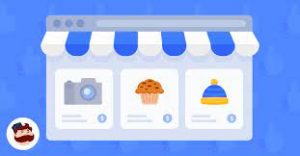 Beyond that, both Facebook and IG have come a long way in support of commerce. The new shop function allows businesses to maintain a store presence on the Facebook platform itself – a massively underrated prospect. Still, when it comes to social, the right platform is so largely contingent on what a company sells, and to whom.
Beyond that, both Facebook and IG have come a long way in support of commerce. The new shop function allows businesses to maintain a store presence on the Facebook platform itself – a massively underrated prospect. Still, when it comes to social, the right platform is so largely contingent on what a company sells, and to whom.
For those of us in the B2B space, that means LinkedIn. But customer-facing industries are understandably committed to the social formats where they can show off. The large majority of producers are split between some combination of Instagram, TikTok, and YouTube with the lion’s share, nearly 72 percent, on Instagram.
No matter the platform, brand success on social media will always be about the size and quality of the following. More followers mean more opportunities for revenue-generating collaborations. Even if designers aren’t aiming for rapid conversions, attention is cash.
On the more visual apps there’s even more money to be made as companies are incorporating interactive shoppable films into existing UGC content. The influencers have taken the cue and it is not uncommon for your favorite fitness YouTuber to develop a line of graphic tees and hoodies inscribed with various taglines. The same former influencer will eventually roll this into a direct-to-consumer (DTC) company of their own, no longer needing to sway their followers to invest in any other brand but their own. This is evolution at its finest in 2021.
The earnings of creators vary according to the industry, audience size, and material genre. According to a study conducted by Influencer Marketing Hub, around 34% of creators make less than $20,000 per year. And sadly, of all the modern creators and influencers it’s genuine artists seeing the worst returns – musicians and music producers especially.
According to reports, the top 15 artists earned about $200,000 in 2020, while the top 1,000 producers at Gumroad earned $100,000 or more each month. On Spotify, musicians require 3.5 million plays per year simply to make the $15,080 yearly salary of a full-time minimum-wage worker.
It’s not much better for the large majority of YouTube creators. 96.5 percent earn between $0 and $12,140 every month. This is a massive gap, and even the top end, while representative of the highest-earning 6% of Americans, is still not the sort of wealth we typically associate with success in the music industry. By all accounts, $250,000 of annual household income is more pr less consistent with the upper-middle class.
That’s our speculative opinion, but the evidence is mostly there. Many economists believe the democratization of professional creation has paved way for a new middle class. This idea of the new middle class is polarizing. In one sense, it would seem positive for the middle class to be made up of creators – people whose passions and livelihoods are one and the same. But not everyone agrees. In fact, it’s not clear the creative community is on board with the silver lining. Half of that bunch say that their professional choice has harmed their mental health.
The mental health implications are not merely about the money, and actually may not be financially driven in any way. Supposedly random algorithms seem to favor profiles with already large followings like those belonging to big brands. These accounts tend to receive greater organic reach and, as a result, remain at the top. Social media networks may help to improve algorithm randomness by periodically recommending material from lesser-known producers. Platform-sponsored remuneration for artists is a step in the right direction toward a more level playing field.
Meanwhile, the corporate accounts that tend to get all the attention are often not doing their part. According to 51% of customers, fewer than half of companies develop content that connects as real with them. Perhaps that’s why a career in content creation has become something of a calling. It’s a bit inglorious in that there is such massive potential for corporate creators to do good, and yet so few are leveraging the opportunity to make a genuinely positive impact in the work they do,
Despite this, one study of YouTube, in particular, suggests nearly 61 percent of viewers think a creator has changed their opinions of a company. For companies, collaborating with content artists means reaching new audiences and establishing long-term, lucrative relationships.
Great Expectations – The Customer Needs of Millenial Parents
Lalo, which manufactures high chairs and other baby-friendly furniture, has now raised a total of $5.6 million. Nestig received $1.3 million in seed funding to broaden its product line beyond cribs. Maisonette has received $30 million in funding to help it compete in the $49 billion US children’s clothing industry. Dopple, a subscription-based retailer of children’s clothing, raised $9.8 million in April. Coty announced in 2019 the launch of Kylie Baby, a sister brand to Kylie Cosmetics. Super Smalls, which sells children’s jewelry and accessories, claims that its revenue increased 416 percent year on year during the 2020 holiday season.
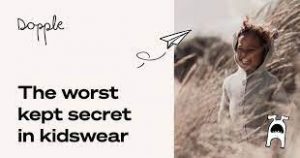
What do each of these brands have in common? A similar set of value props and copy touting qualifiers such as carbon neutral, made-to-last, and derived from natural materials or ingredients.
The takeaway: New parents (Young Millenials and Old Gen Z) who have spent their twenties and thirties hacking their own health with natural remedies and “clean” foods can pass on their passion to their children.
And if you’re wondering why you’ve not heard of most of these brands, and wondering where all the patronage is coming from, all that means is you’re not in the inner circle.
The formula is fairly simple – a great product and beautifully designed website are one-half. The real variable though is two-fold: personalization and community…
…which sounds like conflicting ideals, but hear us out.
Today’s parents are used to interacting with brands on a whole different level. They’ve either grown up on the internet or spent their formative years amidst web 2.0. If Gen Z is the master of leveraging social media for activism, then millennials reign supreme as social consumers demanding they speak to the company’s brand presence as if it were the manager of a TJ Maxx.
At the same time, this generation of shoppers, and especially those who are new parents, want brands to provide them with a talking point — or even a meeting place — that can help them connect with other parents. This might seem antithetical to that 1-on-1 convo with someone from the c-suite through company DM regarding tracking numbers or ingredient lists, but this is a whole different thing entirely. The two are mutually exclusive. On the one hand, there’s the conversation with you, the brand expert, and on the other, the expectation that you’ve provided a forum where they can pressure test claims about a product with other young parents in the trenches.
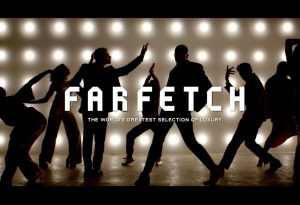 According to luxury fashion eCommerce platform Farfetch, 46% of millennial parents turn to social media when looking for kids’ clothing ideas. They’ve even helped their kids build up their own online presence, with 22% of Farfetch shoppers with kids under the age of 13 saying their children have their own social media accounts.
According to luxury fashion eCommerce platform Farfetch, 46% of millennial parents turn to social media when looking for kids’ clothing ideas. They’ve even helped their kids build up their own online presence, with 22% of Farfetch shoppers with kids under the age of 13 saying their children have their own social media accounts.
Madeline Lauf, the founder of Begin Health, says the company has two communities on Facebook with a few hundred members each, where parents congregate to talk about their children’s potty habits. She says that while older generations of parents might have wanted to keep a problem like this private, parents today “want to know that they’re in this together with other parents, that they’re not alone.”
“Millennials want to have that connected experience around a brand,” she explains. “Who are the other parents using this brand, and what journey are they on? What worked for them? What are their recommendations and how can I contribute to that community?”
Brands’ community-building activities might vary from casual to highly strategic. Each week, Super Smalls makes a point of resharing material from parents’ Instagram stories showing their children receiving their new gifts or showcasing the brand’s jewelry on its own Instagram stories. “We love seeing parents share unboxing videos and user-generated content,” founder, Dueñas Jacobs says. “Aesthetics, packaging and branding are important — as is creating a relationship with the customers. As a relatively new brand, building trust and common language is key.”
Meanwhile, Lalo has gone a step further, forming a “product council” in May 2021, bringing together a group of 15 parents who are now consulted on all new product releases. In return for their time, these parents are given complimentary items, with the goal that they would promote them to other parents.
The pandemic has only increased the prevalence of these extra touches. In April 2020, a few weeks into the UK’s lockdown, children’s bedroom decorating brand Pea decided to send out seeds to customers who had joined up for its “Adventure Club” (which had, until then, provided printable activities for children and parents). Claire Quigley Ward, co-founder, claims that the brand distributed 8,000 packets of seeds during the promotion’s brief duration.
“We were conscious of the fact children were suddenly stuck at home, for some [that meant] living in flats with limited access to nature and not a lot to do,” she says. “It was one of those things that helped us talk to people at a brand level rather than just a product level.”
Pinterest To Be the Go-To Platform for Creators
Pinterest is adding a vertical video feed and investing $20 million in “Creator Rewards”. Earlier this year, Pinterest introduced Idea Pins, a video-first feature aimed at creators. While perhaps late to the party (IG, YouTube, and Facebook, all have Tik-Tok-esq functionality), the Pinterest iteration differs in two significant ways:
- Pinterest is a web-first platform. Nearly all other social media, with the exception of LinkedIn, are mobile-first, and more naturally lend to video. There are likely many reasons for this, but the one we’ve been thinking about is the fact that with mobile video, the creation tool and the consumption tool are one and the same.
- Pinterest is a creator’s platform. This is a place where people go specifically for marker inspiration. The is the perfect place for creatives to show off, and an even better place for aspiring creatives to curate inspiration.
Now, the company is doubling down on each of these unique elements by dedicating its home page to the new collection of video features. It also goes a step further than previous copycats by matching Tik-Tok’s more conversational qualities. The new Watch feed allows viewers to interact with each other’s Idea Pins in a similar fashion to TikTok’s Stitch and Duets format. With Takes, creators can respond to an Idea Pin with one of their own, and the response is linked back to the original.
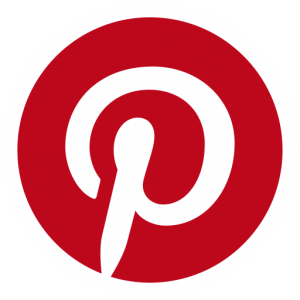 To kick off “Takes,” Pinterest is pulling in celebs including Jennifer Lopez, Megan Thee Stallion, and Storm Reid. Pinterest is launching a $20 million Creator Rewards fund in the U.S. This is its first-ever in-product creator monetization program. The company is also embracing its status as the leader in DIY/How To type content by launching its own original content series, featuring over 100 creators across 10 countries. The creators will teach Pinterest users new skills in areas like beauty, home décor, and more.
To kick off “Takes,” Pinterest is pulling in celebs including Jennifer Lopez, Megan Thee Stallion, and Storm Reid. Pinterest is launching a $20 million Creator Rewards fund in the U.S. This is its first-ever in-product creator monetization program. The company is also embracing its status as the leader in DIY/How To type content by launching its own original content series, featuring over 100 creators across 10 countries. The creators will teach Pinterest users new skills in areas like beauty, home décor, and more.

